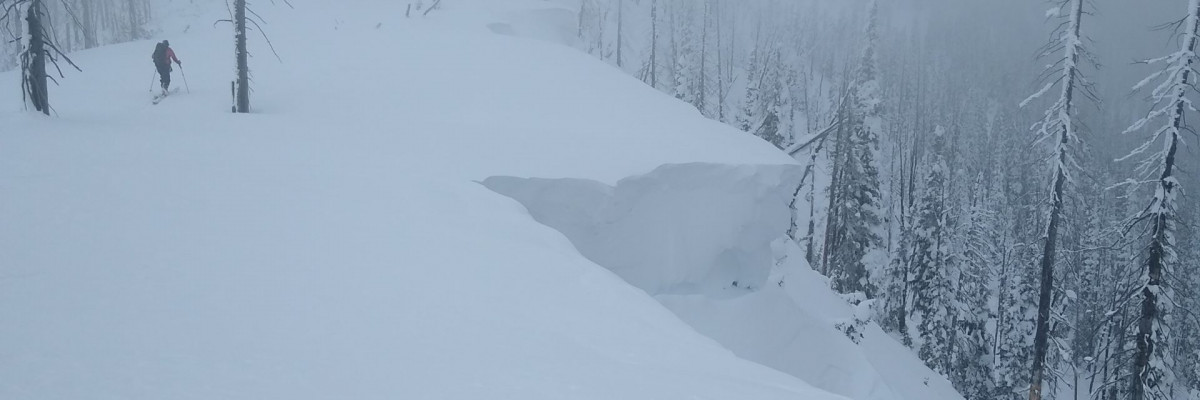The avalanche danger for the west central Montana backcountry is CONSIDERABLE on wind loaded slopes and MODERATE on all other slopes. New snow and wind are creating dangerous avalanche conditions on leeward slopes, where it is likely to trigger an avalanche today.
Good morning, this is Jeff Carty with the West Central Montana Avalanche Center’s avalanche advisory for February 08, 2020. This danger rating does not apply to operating ski areas, expires at midnight tonight, and is the sole responsibility of the U.S. Forest Service.
Weather and Snowpack
Since the start of the storm on Tuesday, February 04, we’ve received an average of 2.8 inches of snow water equivalent (SWE). The crust that formed with the warm temps and winds on Saturday, February 01, is now buried over 2 feet deep. Temperatures have been mild throughout the storm, and freezing levels rose to about 6400’ Thursday and Friday. Strong westerly winds accompanied the start of the storm and picked up again last night, reaching 61mph. Westerly gusts to 50mph are forecast for today, and another 5-10 inches is expected to fall by evening.
The strong winds are creating wind slab on leeward slopes that will build throughout the day. These are likely to be triggered by the weight of a single skier or snowmobile. Wind loaded pockets >35º, near ridgetop, are the most likely place to trigger an avalanche. However, cross-loading may create windslab lower on slopes. Be wary of stiff pillows of hollow sounding snow, and the leeward side of ridges.
Storm slab is also a concern. Warm temps mid storm created a density break in the new snow that was showing a propensity for propagation, in some locations, a foot below the surface yesterday. This will gain strength quickly; however, it is getting buried deeper and poses a risk on steep convex or unsupported terrain, especially if there are terrain traps present. At lower elevations, less than 5800’ at Lolo Pass, a thin crust was formed mid-storm, but new snow seems to be bonding well to it. Loose snow avalanches may be a problem on steep terrain.
The Bottom Line
Strong winds and plenty of new snow available for transport will be building dangerous wind slabs throughout the day. The likelihood of triggering a windslab will increase as the day progresses. Storm slabs are also possible on 35º+, convex, and unsupported slopes. Terrain traps will increase the consequences of either of these problems.
Travel with partners, avoid steep convex or wind-loaded terrain. Be on the lookout for red flags.
Always carry a beacon, shovel, and probe.
As always, we welcome all public observations of avalanche conditions, please submit them here.
If you’d like to increase your avalanche knowledge and competence, check out our course offerings.
Ski and ride safe.
























